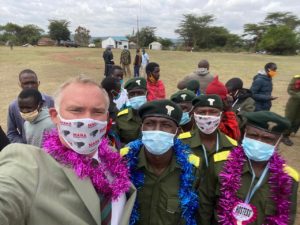 Mara Elephant Project held a recruitment for local men and women in the Loita area in September and we are pleased to announce this team has just completed their 6-week training on MEP’s campus and are ready to be deployed by December 1. On November 20, a passing out (graduation) parade was held in the Entesekera trading center on the edge of the Loita Forest to celebrate the launch of the additional MEP rangers into this area. Pictured left: CEO Marc Goss with rangers. The parade was not only important to showcase the change the recruits have undergone but also formally present themselves to the community as guardians of the area. In attendance were board members from the Kenya Water Towers Agency, Deputy County Commissioner, Kenya Wildlife Service Warden, community elders, family members of the recruits and MEP management staff. MEP works alongside communities and government to increase protection for the Mara’s wildlife, communities and habitat, which makes sharing these successes with them all that more meaningful. The new rangers are proud to be protecting Kenya’s national heritage and their backyards. They are fully kitted with all the gear they need to operate in this area, and we are excited to see what impact they’ll make in 2021.
Mara Elephant Project held a recruitment for local men and women in the Loita area in September and we are pleased to announce this team has just completed their 6-week training on MEP’s campus and are ready to be deployed by December 1. On November 20, a passing out (graduation) parade was held in the Entesekera trading center on the edge of the Loita Forest to celebrate the launch of the additional MEP rangers into this area. Pictured left: CEO Marc Goss with rangers. The parade was not only important to showcase the change the recruits have undergone but also formally present themselves to the community as guardians of the area. In attendance were board members from the Kenya Water Towers Agency, Deputy County Commissioner, Kenya Wildlife Service Warden, community elders, family members of the recruits and MEP management staff. MEP works alongside communities and government to increase protection for the Mara’s wildlife, communities and habitat, which makes sharing these successes with them all that more meaningful. The new rangers are proud to be protecting Kenya’s national heritage and their backyards. They are fully kitted with all the gear they need to operate in this area, and we are excited to see what impact they’ll make in 2021.

The MEP rangers at the passing out ceremony.
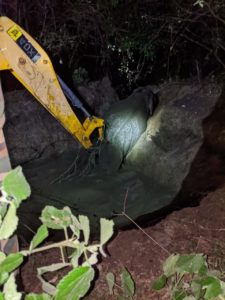 On November 10, Mara Elephant Project got a call about an elephant that had gotten stuck in a sewage soak pit by Sidai Camp in the Oloolaimutia area of the Mara. Pictured left: Digging the elephant out into the night. MEP deployed rangers to help with the rescue efforts alongside partners. An excavator was provided by Olarro Conservancy in an attempt to dig out a path for the elephant and help the water surrounding him drain. Luckily, after several hours of work that went into the night, the pit was drained, and a path was cleared for the exhausted elephant to break free. Operations like this are only successful because of the partners that all come together to ensure a positive outcome.
On November 10, Mara Elephant Project got a call about an elephant that had gotten stuck in a sewage soak pit by Sidai Camp in the Oloolaimutia area of the Mara. Pictured left: Digging the elephant out into the night. MEP deployed rangers to help with the rescue efforts alongside partners. An excavator was provided by Olarro Conservancy in an attempt to dig out a path for the elephant and help the water surrounding him drain. Luckily, after several hours of work that went into the night, the pit was drained, and a path was cleared for the exhausted elephant to break free. Operations like this are only successful because of the partners that all come together to ensure a positive outcome.
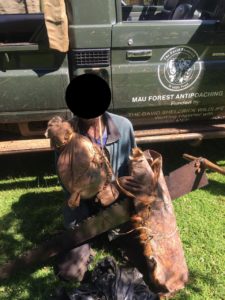 In the first four days of November, the Mara Elephant Project / Sheldrick Wildlife Trust Mau De-Snaring Unit stationed in the Mau Forest collected 22 snares within the forest used for bushmeat poaching. The two teams operating in the Mau alongside partners Kenya Wildlife Service (KWS), Kenya Forest Service (KFS) and Bongo Surveillance Project (BSP) also ended November with several notable bushmeat poaching busts. On November 26, three suspects were arrested for bushmeat poaching and the team removed 12 active snares they had set nearby. The next day, the Charlie team alongside KWS and KFS arrested one suspect with 3 kg of bushmeat and confiscated three gazelle skins (pictured left). Then, on Saturday, November 28, an additional suspect was arrested with bushmeat and finally, on November 30, the Charlie team arrested two suspects alongside KWS, KFS and BSP with 15 kg of bushmeat and gazelle parts. Removing these snares not only saves the smaller animals usually caught in them, but also prevents larger animals like elephants and lions from sustaining life-threatening injuries. This is especially important for the critically endangered Mountain Bongo antelope.
In the first four days of November, the Mara Elephant Project / Sheldrick Wildlife Trust Mau De-Snaring Unit stationed in the Mau Forest collected 22 snares within the forest used for bushmeat poaching. The two teams operating in the Mau alongside partners Kenya Wildlife Service (KWS), Kenya Forest Service (KFS) and Bongo Surveillance Project (BSP) also ended November with several notable bushmeat poaching busts. On November 26, three suspects were arrested for bushmeat poaching and the team removed 12 active snares they had set nearby. The next day, the Charlie team alongside KWS and KFS arrested one suspect with 3 kg of bushmeat and confiscated three gazelle skins (pictured left). Then, on Saturday, November 28, an additional suspect was arrested with bushmeat and finally, on November 30, the Charlie team arrested two suspects alongside KWS, KFS and BSP with 15 kg of bushmeat and gazelle parts. Removing these snares not only saves the smaller animals usually caught in them, but also prevents larger animals like elephants and lions from sustaining life-threatening injuries. This is especially important for the critically endangered Mountain Bongo antelope.
 MEP rangers with antelope skins recovered.
MEP rangers with antelope skins recovered.
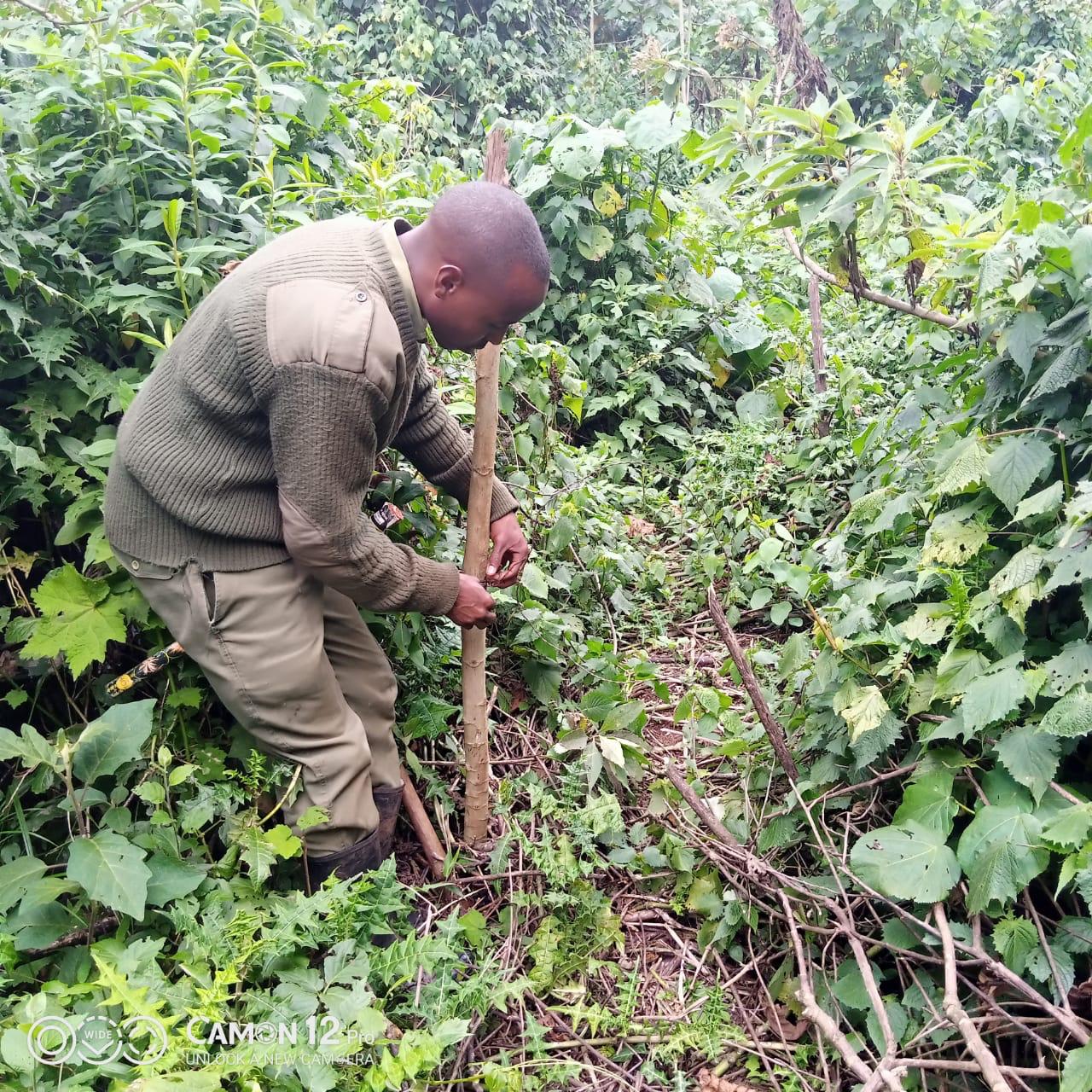 MEP rangers removing bushmeat snares.
MEP rangers removing bushmeat snares.
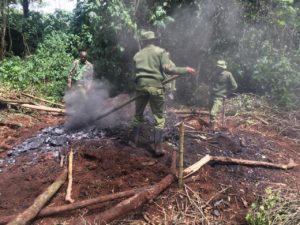 These teams are also tasked with shutting down illegal habitat destruction activities in the forest day and night. On November 4, alongside KWS, they arrested two suspects that were producing charcoal in the forest and destroyed the kilns found at the site (pictured left). Then, the next day, they destroyed six additional active kilns and two poacher’s huts inside the forest. These poacher’s huts are called that because it’s where people illegally squat in the forest while they are making charcoal, logging and usually bushmeat poaching as well. That same day, the KWS rangers and MEP team also arrested two additional people that were transporting charcoal sacks out of the forest on donkeys.
These teams are also tasked with shutting down illegal habitat destruction activities in the forest day and night. On November 4, alongside KWS, they arrested two suspects that were producing charcoal in the forest and destroyed the kilns found at the site (pictured left). Then, the next day, they destroyed six additional active kilns and two poacher’s huts inside the forest. These poacher’s huts are called that because it’s where people illegally squat in the forest while they are making charcoal, logging and usually bushmeat poaching as well. That same day, the KWS rangers and MEP team also arrested two additional people that were transporting charcoal sacks out of the forest on donkeys.
MEP Monthly Report November 2020
On November 12, this team received intelligence about an illegal logging operation in the forest and when they arrived on site, they found evidence but no suspects. They were able to confiscate 26 logs and made a plan to ambush the site the next day. This proved successful when they arrested one suspect transporting timbers made from the illegally cutdown logs on a motorbike and discovered a larger tractor carting the timbers out of the forest, 21 in total. Later that week, in the Chepsir Forest, the ranger team arrested five suspects for charcoal production and destroyed four active kilns. Later that night, they set up ambush sites to catch people leaving the forest with timbers and arrested one additional suspect with timbers on a motorbike. Finally, their week ended with a big bust at night and the arrest of three suspects transporting logs out of the forest.

Illegal logs confiscated in November.
Alongside partners, MEP’s ranger presence on the ground helps increase protection of an area and deter illegal habitat destruction activities. The intelligence gathered and efforts to arrest suspects, confiscate timbers and destroy kilns all contributes to raising the opportunity cost for people partaking in these illegal activities in hopes that we’ll see this critical important habitat maintained. Overall, in November, MEP rangers covered a distance of 767 km on foot, patrolled 11,055 km by car and 2,677 km on motorbike. They arrested 23 suspects for illegal habitat destruction activities, destroyed 39 sacks of charcoal, 30 kilns and confiscated 11 trees illegally cutdown, 129 posts and 81 timbers. MEP rangers also arrested four bushmeat poaching suspects, removed 71 snares and confiscated 38 kg of bushmeat.
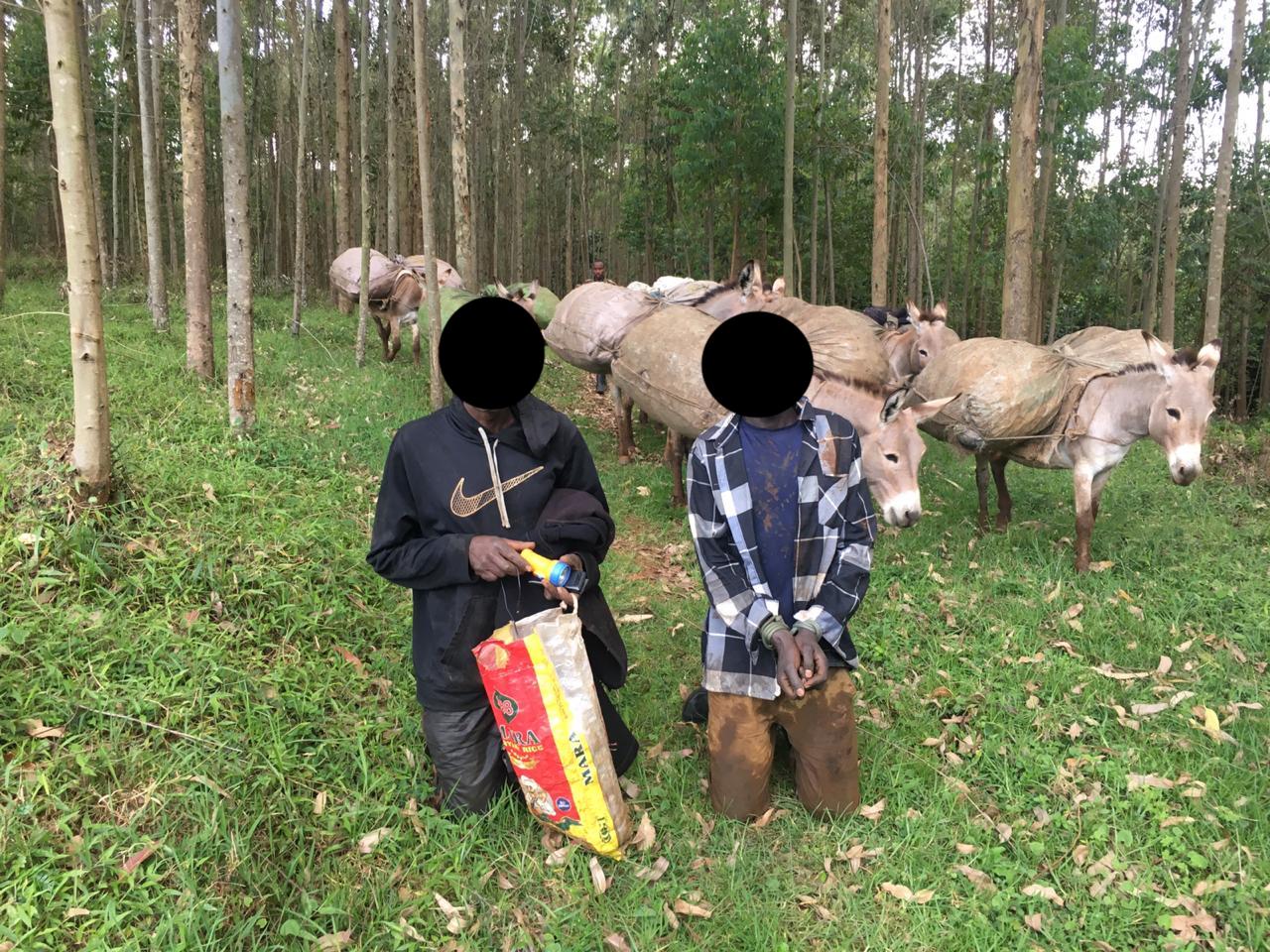
A charcoal arrest in November.
MEP has hired a R44 helicopter operated by Helicopter Charters East Africa on an hourly charge. This month we were able to do two operations using this helicopter. On the 25th KWS and MEP darted and re-collared elephant “Hannibal” whose collar was starting to fail due to an old battery. The operation was a success, and we are now able to monitor Hannibal and his large herd of over 70 individuals in real time. Then, on the 27thwe were requested by KWS Headquarters in Nairobi to push Hannibal and his large herd of over 70 individuals out of settlement areas south of Suswa mountain. The herd was very difficult to push and we only managed to push them several kilometers. The community and the KWS were very appreciative of the support.

Marc during Hannibal’s re-collaring operation.
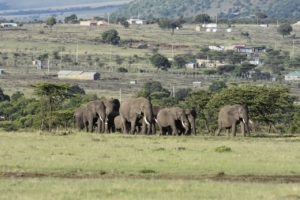 Fred, (pictured left) who usually sticks close by to MEP’s campus moved into the Triangle before coming back. In between, he broke geo-fences and crossed the Mara River several times. Newly collared Harriet was monitored daily by the MEP Alpha ranger unit. She and her herd have been breaking into farms and through fences because of a large damn nearby that’s fenced in. Lempiris was staging in the Loita Hills during the day and crop raiding at night. Fitz, sponsored by Angama Foundation, spent the whole period in Nyakweri Forest but continued his crop raiding and kept the MEP Bravo ranger team very busy.
Fred, (pictured left) who usually sticks close by to MEP’s campus moved into the Triangle before coming back. In between, he broke geo-fences and crossed the Mara River several times. Newly collared Harriet was monitored daily by the MEP Alpha ranger unit. She and her herd have been breaking into farms and through fences because of a large damn nearby that’s fenced in. Lempiris was staging in the Loita Hills during the day and crop raiding at night. Fitz, sponsored by Angama Foundation, spent the whole period in Nyakweri Forest but continued his crop raiding and kept the MEP Bravo ranger team very busy.
The MEP Research Department made progress in November with consolidating and cleaning spatial data layers in the Landscape Dynamics database. We’ve submitted a paper in collaboration with Peter Tyrell from Oxford/SORALO describing the database system. Public data, including the most up-to-date information on roads, fences etc., can be downloaded in different formats from ArcGIS online and all of the MEP collected road and fence data is being made available through this system. Our fence team mapped a further 292 km’s in November including 13 km of fences that have been taken down in Pardamat. Finally, on November 30, Seedballs Kenya received a donation of 25 kg of seed balls to give to MEP to distribute from Paul Meulblok. Thank you to Cecelia English and Madison Upton for their Facebook fundraisers in support of MEP in November.


